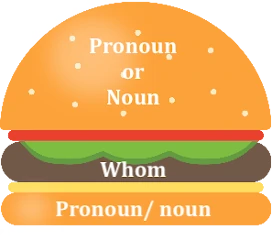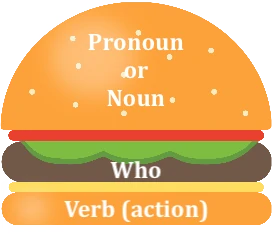Relative Pronouns
In this article, we will discuss what relative pronouns are. Relative Pronouns introduce relative clauses. For example: you, us, it, them, ourselves, which, that, who, whom, whose, when, where etc. Now, you might be wondering what relative clauses are. Let's try and understand the concept.
What are Relative Clauses?
Relative clauses are clauses (parts of a sentece) containing information related or referring to the subject. Let’s understand this better with the help of an example.
Examples of Relative Clauses & Relative Pronouns
Question 1:
We do not know the mystery person who donated that large amount of money to the orphanage.
Find out the relative clause and subject in the question above.
Answer:
Subject - mystery person
Relative Clause - donated that large amount of money to the orphanage
Explanation:
The subject in the question above is the "mystery person", and the relative clause would be "donated that large amount of money to the orphanage". So, the relative clause is the additional information about the subject, which is the “mystery person” in this question.
Question 2:
Spot the relative pronoun in the following sentence.
We do not know the mystery person who donated that large amount of money to the orphanage.
- who
- person
- We
Answer:
who
Explanation:
In this question, “mystery person” is the subject and “donated that large amount of money to the orphanage” is the relative clause as it provides more information about the mystery person aka the subject. If you recall, we read earlier that relative pronouns help introduce relative clauses. So, the correct answer to this question is Option (1) - Who.
Question 3:
Are “who” and “whom” the same? Can they be used interchangeably?
- Yes!
- Of course not!
Answer:
Of course not!
Explanation:
The correct answer to this question is option (2) - of course not. There are certain grammar rules that help us decide when to use “who” and when to use “whom”.
Relative Clauses - Who, Whom, Whose
Who, Whom and Whose are one of the more challenging group of words as they all look and sound similar. Try to understand the correct usage of these words in detail below.
- We’ll try to understand the usage of “whom” with the image above as a guide. When the word is sandwiched between a noun/pronoun and another noun/pronoun, “whom” is used.

Example: I did not know that the man (noun) whom we (pronoun) saw last weekend is your father.
- If the word is sandwiched between a pronoun/noun and a verb, which is an action, we will then use “who”.

Example: The man (noun) who was (verb) seen last weekend is your father.
- Now, let’s try and understand when to use “whose”. “Whose” is a relative pronoun that shows belonging or possession.
Example: The man (subject), whose boat (subject’s belonging/possesion) drifted away, is stranded now.
Note: In such sentences, either use two commas or none at all.
Question 4:
Sebastian is the mermaid’s best friend. He is protective of her.
__________ whose __________.
Answer:
Sebastian, whose best friend is the mermaid, is protective of her.
Test Your Concepts
Answer the following questions based on the concepts we’ve covered in this article. If you get stuck, revisit the relevant section to revise the concepts.
Question 1:
The girl __________ wore the red dress is my best friend.
- Who
- Whom
Question 2:
The girl __________ you saw in the red dress is my best friend.
- Who
- Whom
Question 3:
The boy __________ socks are soaked is squirming uncomfortably now.
- Whom
- Who
- Whose
Question 4:
Our discipline master __________ appears very stern is actually a gentle giant.
- Whom
- Who
- Whose
 SG
SG  VN
VN 










